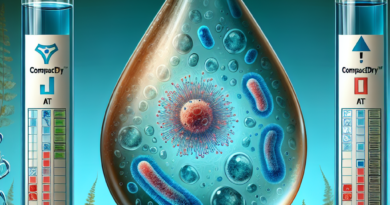Prevalence of Colistin Resistance in Poultry Escherichia coli Isolates from Brazil
Understanding Colistin Resistance in Poultry: A Closer Look at Brazilian Escherichia coli Isolates
With an ever-growing global population, the demand for protein-rich food sources like poultry is on the rise. However, this increase in demand brings with it the challenge of maintaining animal health and food safety, particularly in the face of antimicrobial resistance (AMR). One such concern is the resistance to colistin, an antibiotic of last resort in human medicine, which has been increasingly reported in bacteria from food-producing animals.
Background Context
Colistin has been used both as a growth promoter in animal husbandry and as a critical treatment for multi-drug resistant infections in humans. The discovery of the plasmid-mediated mcr gene, which confers resistance to colistin, has significant implications for public health. This study delves into the prevalence of the mcr-1 gene in Escherichia coli isolates from poultry in Brazil, a major player in the global poultry market.
Study Overview
Researchers collected 107 E. coli isolates from the trachea and cloaca of healthy and sick poultry across different farms in Rio de Janeiro, Brazil. Utilizing a suite of molecular techniques, including PCR, Sanger sequencing, and pulse field gel electrophoresis (PFGE), they sought to determine the presence of mcr genes and characterize the isolates in terms of resistance and virulence.
Key Findings
- The mcr-1 gene was present in a significant proportion (57.9%) of the isolates, indicating a high prevalence of colistin resistance in Brazilian poultry.
- PFGE analysis suggested that the emergence of colistin resistance was not due to clonal spread but rather a diverse set of strains.
- Plasmid replicon typing revealed the presence of plasmids that could potentially facilitate the spread of the mcr-1 gene.
- A considerable number of isolates could be classified as avian pathogenic E. coli (APEC), based on virulence gene profiling.
Implications for Public Health
The high prevalence of mcr-1 in poultry isolates is concerning, as it suggests that animal husbandry practices could be a source of resistance entering the human food chain. This underscores the need for continuous monitoring and prudent use of antimicrobials in animal agriculture to mitigate the risk of AMR transmission to humans.
Conclusion
This study highlights the critical need for comprehensive surveillance and stewardship programs to manage the spread of AMR in the food production industry. It also calls for further research to understand the mechanisms of resistance dissemination and to develop strategies to safeguard both animal and human health.
References
Barbieri, N. L., Pimenta, R. L., de Melo, D. A., Nolan, L. K., de Souza, M. M. S., & Logue, C. M. (2021). mcr-1 Identified in Fecal Escherichia coli and Avian Pathogenic E. coli (APEC) From Brazil. Frontiers in Microbiology, 12. http://dx.doi.org/10.3389/fmicb.2021.659613




